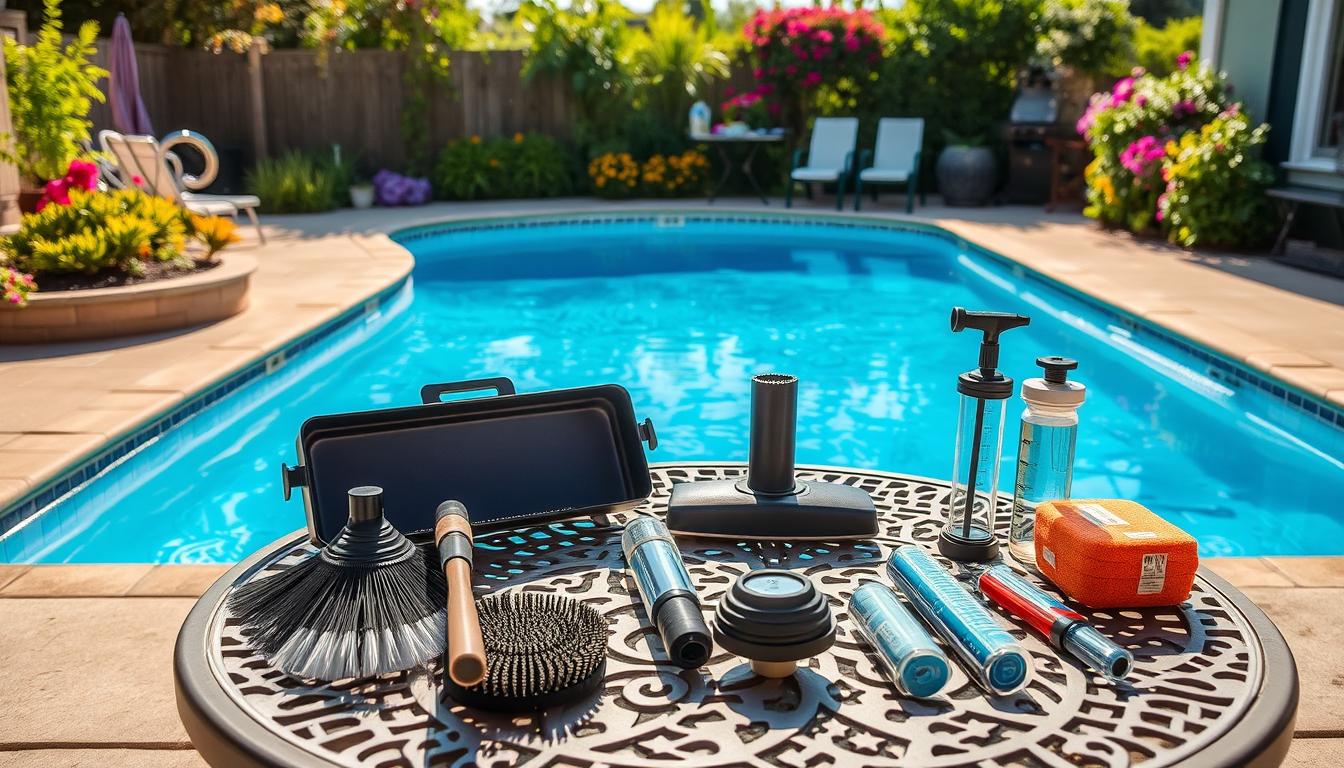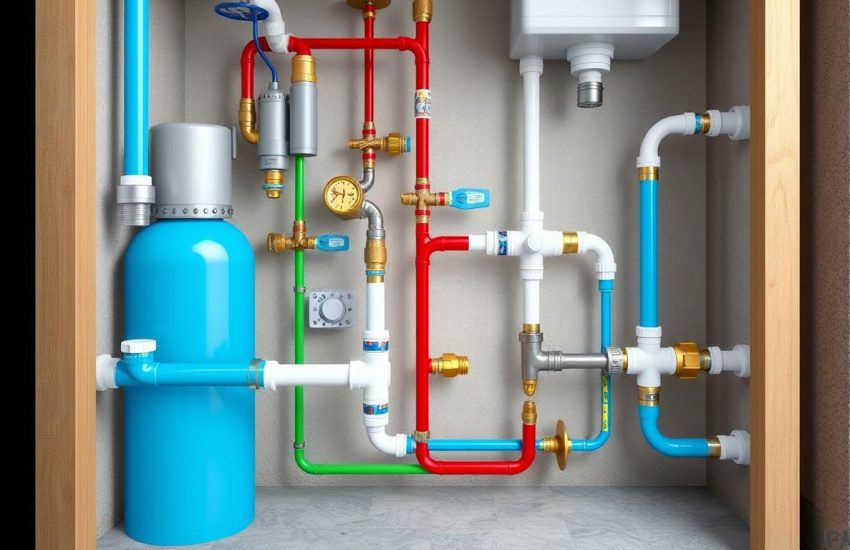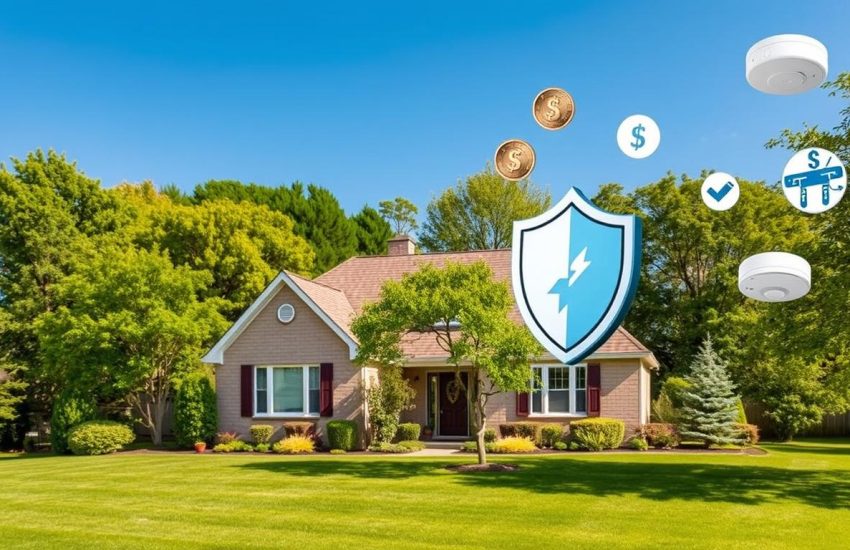Pool Care: A Complete Guide for Homeowners
Have you ever wondered what makes a pool’s water look so blue and inviting? It’s not magic. It’s about following a strict maintenance plan. This guide is here to help you learn the science of keeping a pool perfect. No matter if you’re new to this or have been caring for pools for years, this guide is your friend.
Maintaining the right water chemistry is very important. You want pH levels between 7.2 and 7.8 and at least 1 ppm of chlorine. It’s a balance of keeping the pool clean, filtering the water, and checking the equipment. We’ll cover everything you need to keep your pool beautiful and safe all year.
Key Takeaways:
- It’s vital to keep balanced water chemistry, aiming for pH levels between 7.2 and 7.8 and chlorine at 1 ppm or more.
- Regular cleaning like skimming, brushing, and vacuuming stops algae and keeps your pool clear.
- Good filtration and circulation help spread chemicals and remove debris.
- Using tech like doForms modernizes pool care.
- Safety and equipment checks keep your pool safe and up to standards.
- Energy-efficient pumps can lower your electric bills.
- Remember the three C’s – circulation, cleaning, and chemistry – for a healthy pool.
Why Focus on Pool Care?
Taking care of your swimming pool is crucial. It helps save money on pool care. It also improves water quality and home improvement. Looking after your pool, whether it’s for personal or commercial use, stops small problems. It also prevents big issues later.
Testing your pool’s chemicals daily is important. This includes checking chlorine and pH levels. These checks prevent algae and bacteria from growing. They keep your swimming safe and fun. Regular cleaning of pool sides and skimmers is also key.
Knowing how to maintain your pool is a big part of home improvement. It helps keep things like filters and heaters working well. This avoids expensive fixes. Learn more about pool maintenance. It could save you money.
| Maintenance Task | Frequency | Benefits |
|---|---|---|
| Chemical Balancing | Daily | Prevents algae and bacteria growth |
| Filter Cleaning | Weekly to Monthly | Enhances filtration efficiency, extends lifespan |
| Equipment Inspection | Monthly | Identifies minor issues before they escalate |
| Brushing Pool Sides | Weekly | Prevents build-up, keeps walls clean |
| Skimming and Vacuuming | 1-2 times a week | Removes debris, maintains clear water |
Maintaining your pool well is not just for looks or to make it work. It is also about saving money and being sustainable. Those who take good care of their pools not only enjoy swimming more. They also add value and improve their property.
DIY vs Professional Help
Choosing DIY pool care or professional services is big for homeowners. Both have pros, like time, cost, and know-how.
DIY pool care saves money and lets you know your pool well. Buying tools like pool vacuums costs money at first. But, you keep paying for chemicals and supplies.
Professional services bring ease and skill but cost $100 to $150 a month. This depends on your pool’s size and use. Pros use great tools and stuff for a clean pool. This is best for those who rather play in the pool than work on it.
| Aspect | DIY Pool Care | Professional Pool Care |
|---|---|---|
| Initial Cost | Higher due to equipment purchase | Lower, no equipment needed |
| Ongoing Cost | Variable, frequent chemical and supply purchases | Fixed, monthly service fees |
| Expertise | Time and effort to learn | Expert care, consistent quality |
| Time Investment | Significant, regular personal involvement | Minimal, professionals handle all tasks |
| Outcome | Dependent on individual ability | Professionally maintained, often superior |
Mixing DIY with professional help could work well. Do easy tasks yourself. But, get a pro for checks now and then. This catches problems early.
Your choice depends on what you like, your time, and money. Whether it’s DIY happiness or the peace of professional work, the goal is a clean, fun pool.
How to Save Money
Start saving on your pool by understanding its needs and using your resources smartly. Adding a variable-speed pump can cut energy costs by up to 90%. This makes caring for your pool cheaper without losing quality.
Keeping a regular pool cleaning schedule keeps your pool looking and feeling great. It also saves you money. Tasks like brushing and vacuuming each week stop algae and cut down on expensive chemicals.
Keep an eye on your pool’s chemistry to save on chlorine. Make sure Cyanuric Acid levels are between 30 and 50 ppm. This protects your chlorine. Also, balance your water and shock it weekly to make maintenance cheaper.
| Cost-Saving Measure | % Reduction in Costs |
|---|---|
| Using solar covers | 60-90% |
| Proper filter management | Reduce excessive water usage |
| Energy-efficient pool pump | Up to 90% |
| Regular maintenance | Prevents costly repairs long-term |
Improving your pool’s efficiency isn’t just about mechanical updates. Using covers like solar or liquid ones helps a lot. They can stop up to 90% of water evaporation. This means you don’t have to refill your pool as often.
For tips on saving money while managing your pool, check out this detailed guide.
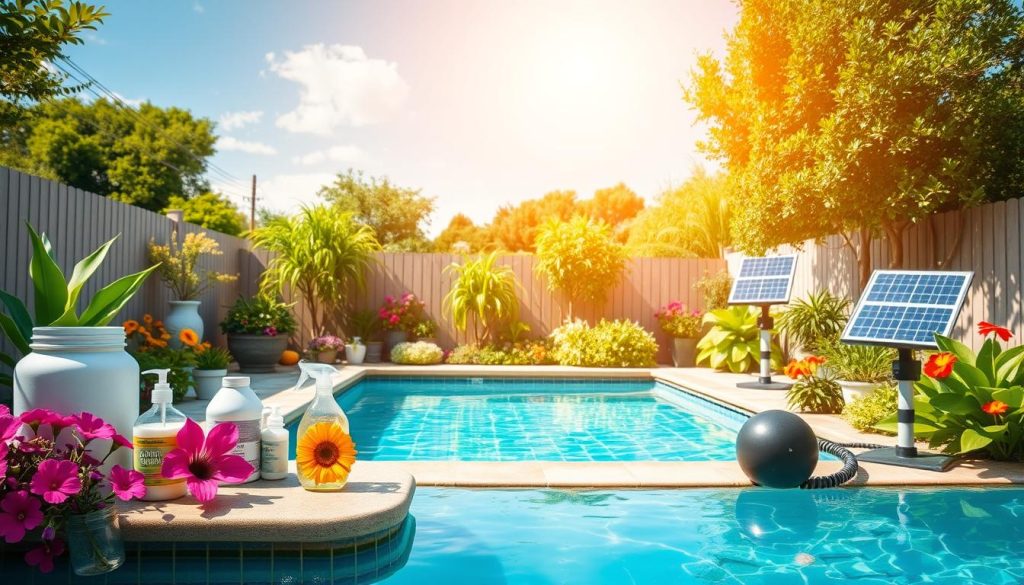
Every little step towards smarter pool management helps save money. Lower your heater’s temperature when you’re not using the pool and turn off water features to save energy. Each effort makes your pool care more affordable. With a good cleaning plan, a smart pump, and regular water tests, you’ll have a cost-friendly pool season.
Step-by-Step Upgrades
Adding new pool upgrades can make your backyard a cool spot to relax or have fun. We’ll talk about adding things like LED pool lighting, better filters, and an automatic pool cleaner.
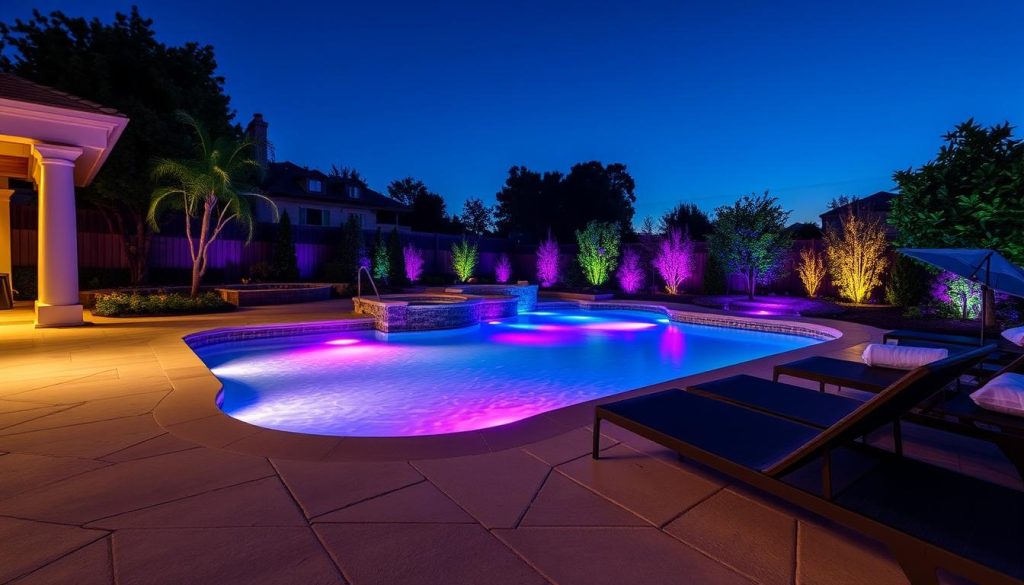
First, putting in LED pool lighting can really change things up. It looks great and saves energy too. Place these lights near steps or water highlights for a cool effect.
Using an automatic pool cleaner makes keeping the pool clean much easier. They work on their own to pick up dirt, like how regular check-ups keep your home systems running smoothly.
| Type of Pool Cleaner | Features | Benefits |
|---|---|---|
| Robotic Vacuums | Programmable, Energy Efficient | Less manual cleaning needed, saves energy |
| Pressure Vacuums | High Power Cleaning | Cleans big debris well |
| Suction Vacuums | Cost-effective, Easy to Use | Good for small and medium pools |
Picking a good filter is key for clear, clean water. You can choose from sand, cartridge, or diatomaceous earth filters. Each one fits different pool sizes and cleaning needs. For example, sand filters work well for big pools.
To make your pool even better, think about adding variable speed pumps and new sanitation systems. Variable speed pumps can change their speed to save energy, which makes running your pool cheaper.
Upgrade your pool step by step to make it better and more fun to use. These changes can also make it worth more.
Final Tips for Success
Some key strategies are crucial for proper pool care. They ensure your pool stays sparkling. The three C’s are the foundation of pool health. First, let your pool’s pump run at least 10 to 12 hours daily. This stops algae and keeps the water clear. For the best results, try to keep your pool’s water moving all the time.
Next, cleaning your pool well is important. Use the correct tools like a net skimmer, pool brush, and vacuum. You should skim, brush, and vacuum your pool every week at least. Also, don’t forget to backwash your filters to keep water flowing smoothly.
Keeping your water balanced is mostly about the chemicals. Check and adjust your pH levels weekly. You want them between 7.4 and 7.6. Keep alkalinity between 100 to 150 ppm to stop sudden pH changes. If you have issues like odors or cloudiness, shock the water. Make sure your filters work right and clean them when needed. Adding D.E. powder to a sand filter can make it filter better.
Make a maintenance schedule and put it somewhere visible. This can help you avoid forgetting about pool care. Staying on top of it yourself can save you over $100 a month from professional fees. Also, pay some attention to less-used equipment, like the pool heater.
To end the swimming season right, winterization is key in cold places. This prevents damage by draining and protecting pipes and filters. Seal everything up until it gets warm again. In spring, just clean, refill, reconnect, and rebalance your pool. Then, you’re all set to enjoy it again.

